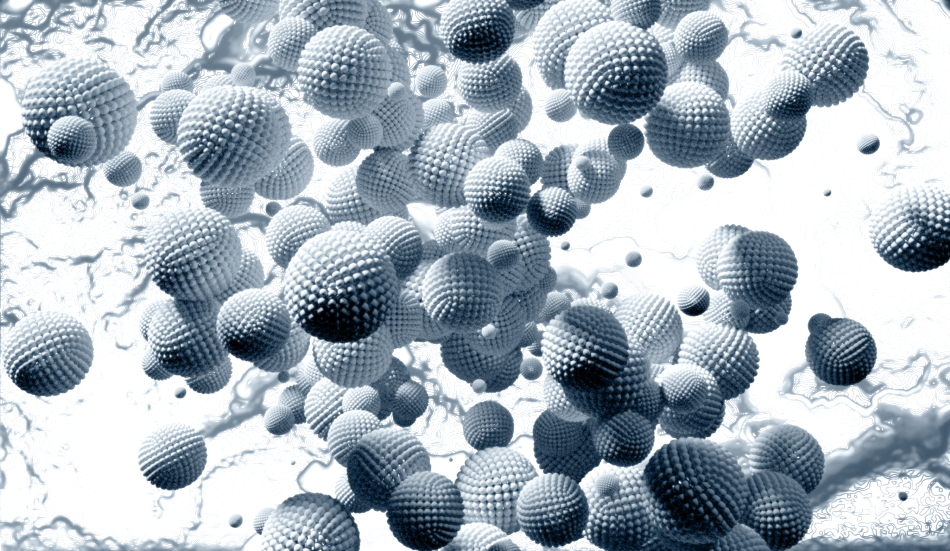One of the most significant movements in contemporary science within the last few centuries has been an increase in our ability to observe and analyze energy, matter and various interactions at the so-called nanoscale of size. In this realm, theoretical physics has often predicted particles and phenomena decades before experimental physics has been able to find evidence for such predictions.

Image Credit: GiroScience/Shutterstock.com
Today, numerous measurement techniques have been developed to analyze the universe at this subatomic scale of size.
The nanoscale
The nanoscale refers to sizes up to 100 nanometers (nm), and down to the smallest possible observable size in the universe – a frontier which is constantly being extended by experimental physicists. This definition of the nanoscale only refers to one dimension of the subject matter: thin-film materials are still considered nanoscale, despite many often being centimeters wide or long, but because they are only a few nanometers thick.
“Nano-” means one-billionth, and 1 nm is 10-9 m (one billionth of a meter). One sheet of paper is approximately 100,000 nm thick, and a strand of human hair is about 80,000 nm thick. Comparatively, if a marble was 1 nm in diameter, then our planet would only be one meter thick.
With modern measurement techniques discussed below, it has been possible to measure our DNA strands at about 2.5 nm in diameter, create single-walled carbon nanotubes only 1 nm in diameter, measure a single atom of gold at approximately 0.3 nm, and identify various nanoparticles just 4 nm wide.
Another definition of the nanoscale used by physicists refers to how matter behaves when observed at these tiny sizes. This falls into the realm of quantum physics and quantum mechanics, in which peculiar non-classical phenomena such as quantum tunneling and quantum superposition are observable.
Nanometrology
Nanometrology is concerned with the measurement of matter at this infinitesimally small scale. Its techniques differ not only due to the size of the subject matter, but also due to different properties requiring measurement, different conditions, and advances in technology. Below are listed some of the techniques for analysis at different ranges, properties, and conditions on the nanoscale.
Atomic force microscopy
In atomic force microscopy (AFM), a highly sensitive cantilever scrapes a sharp tip over the subject material. Deflection in the cantilever is caused by forces acting at the atomic level over the subject. This is detected and then measured with a laser. AFM can produce resolutions in the order of fractions of a nanometer.
Scanning tunneling microscopy
Scanning tunneling microscopy (STM) exploits the quantum mechanical phenomenon of quantum tunneling. In this technique, electrons are made to tunnel through a vacuum between the subject’s surface and a conducting tip on the microscope. As the tip scans the surface, the current is monitored and used to produce an image. STM achieves resolutions of 0.1 nm laterally and 0.01 nm in depth.
Scanning electron microscopy
In scanning electron microscopy (SEM), a high energy electron beam is used to scan the specimen surface. Detectors detect interactions between the specimen’s matter and the electrons such as the backscattering of electrons, transmission of electrons and so on. As well as magnifying the subject between 10 and 500,000 times to enable measurement, SEM can also be used to identify discrete molecules and atoms in the specimen.
Microspectroscopy methods
Various spectroscopic methods exist for analyzing matter and energy at the nanoscale. Methods such as Raman spectroscopy and infrared spectroscopy measure the interactions between a source of radiated energy such as light and matter (for example, the diffraction of light in a glass prism).
Summary
Above are some of the most widely used measurement techniques for analysis at different ranges on the nanoscale, although many others exist. Selecting the optimum technique requires coordination of numerous factors, not limited to the desired resolution or level of magnification. Different research focuses will demand different techniques as they look for different phenomena. A thorough understanding of these and other techniques is needed to find the optimum. As well, limitations of budget, time and available technology are taken into account.
Source
AZoNano (2005). Physics at the Nanoscale, and Nanotechnology Production Methods with Special Focus on Biology. [online] AZoNano.com. Available at: https://www.azonano.com/article.aspx?ArticleID=1134.
National Nanotechnology Initiative (2019). Size of the Nanoscale. [online] Available at: https://www.nano.gov/nanotech-101/what/nano-size.
Disclaimer: The views expressed here are those of the author expressed in their private capacity and do not necessarily represent the views of AZoM.com Limited T/A AZoNetwork the owner and operator of this website. This disclaimer forms part of the Terms and conditions of use of this website.